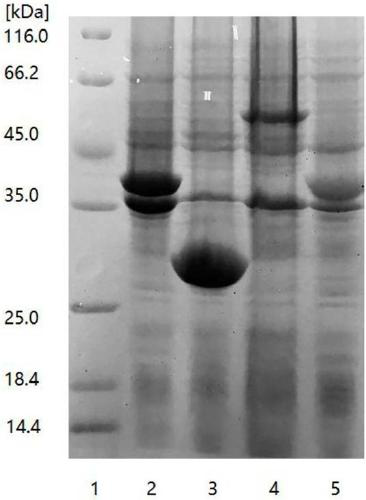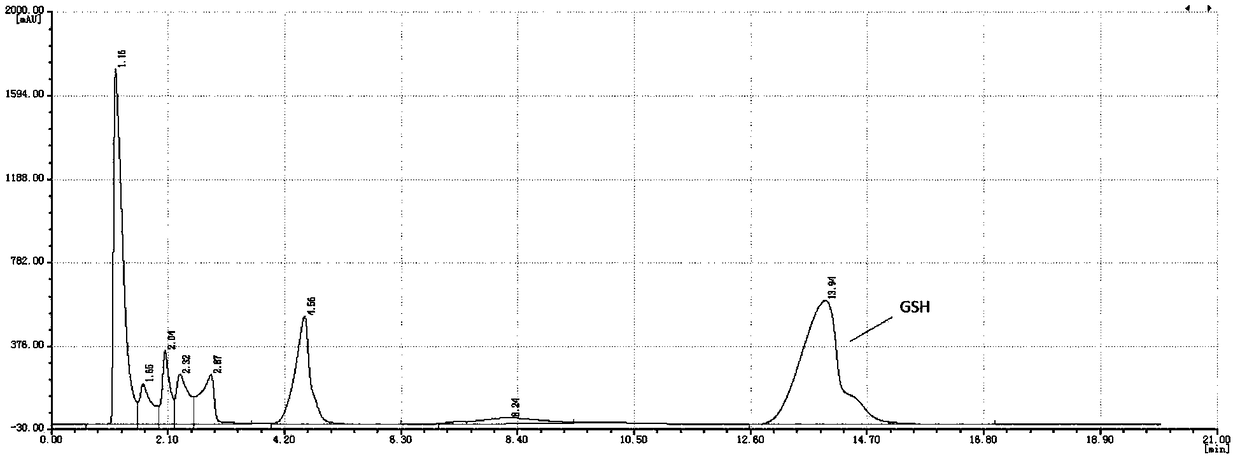Method of enzymatic co-production
An enzymatic and enzymatic reaction technology, applied in the direction of peptides, fermentation, etc., can solve the problems of expensive substrates, difficult to use in large quantities, etc., and achieve the effect of saving reaction time, saving raw material costs, and simplifying reaction procedures
- Summary
- Abstract
- Description
- Claims
- Application Information
AI Technical Summary
Problems solved by technology
Method used
Image
Examples
Embodiment 1
[0044] The preparation of embodiment 1 crude enzyme
[0045] The ATP regenerating enzyme and AK enzyme in the method of the present invention can be obtained commercially, or are artificially modified enzymes having the same catalytic function.
[0046] The enzyme preparation process is as follows:
[0047] Primers were designed according to the gene sequences of PPK enzyme, ADK enzyme, PAP enzyme and AK enzyme, and gene fragments were respectively amplified by PCR and connected to expression vectors (commercially available). .coli BL21(DE3) strain (commercially available).
[0048] Insert the transformed E.coli BL21(DE3) monoclonal into LB medium, culture to the logarithmic phase, add 1mM isopropyl-β-D-thiogalactopyranoside (IPTG) for induction, induce The cells were collected after 5 hours, and high-expression strains were screened by sodium dodecylsulfonate-polyacrylamide gel electrophoresis (SDS-PAGE).
[0049] Insert the screened high-expression strains into the seed m...
Embodiment 2
[0053] Embodiment 2 co-production of S-adenosylmethionine and glutathione
[0054] The operation steps of co-producing S-adenosylmethionine and glutathione are as follows:
[0055] Add substrates to a 100L reaction system: 2.5kg L-glutamic acid, 2.5kg L-cysteine, 1.5kg glycine, 1.5kg L-methionine, 2.5kg adenosine, and 4.2kg hexameta Sodium phosphate, 0.27kg ammonium chloride, 0.37kg potassium chloride, 1.0kg sodium p-toluenesulfonate, 1.0kg magnesium chloride hexahydrate, 0.1kg manganese chloride monohydrate and 0.5kg disodium hydrogen phosphate, stir well and adjust the pH value to 7.0, temperature to 35°C. Add bifunctional glutathione synthase (GshF) 800U / L, PPK enzyme 500U / L, ADK enzyme 500U / L, PAP enzyme 500U / L and AK enzyme 1000U / L in the reaction system to start the reaction, the added enzyme See Example 1 for preparation.
[0056] After reacting for 2 hours, 650 U / L of methionine adenosyltransferase (MAT) was added to continue the reaction, controlling the pH value t...
Embodiment 3
[0058] Example 3 co-production of creatine phosphate and glutamine
[0059] The operation steps for co-production of phosphocreatine and glutamine are as follows:
[0060] Add substrates to a 100L reaction system: 2.0kg creatine, 2.5kg glutamic acid, 0.2kg adenosine, 2.0kg tetrapolyphosphate, 0.4kg potassium chloride, 0.5kg magnesium chloride hexahydrate and 0.6kg Tris, stir Evenly, adjust the pH value to 8.8 and the temperature to 32°C. Add creatine kinase 1000U / L, glutamine synthetase 800U / L, PPK enzyme 500U / L, ADK enzyme 500U / L and AK enzyme 1000U / L to the reaction system to start the reaction. For the preparation of the added enzymes, see Example 1 . During the reaction, the pH value was controlled to be 8.8, and the temperature was 32°C.
[0061] After reacting for 6 hours, the amount of creatine phosphate produced by high performance liquid chromatography (HPLC) was 30 g / L. The HPLC detection conditions are: Kromasil C18 chromatographic column (purchased from AKZO NO...
PUM
 Login to View More
Login to View More Abstract
Description
Claims
Application Information
 Login to View More
Login to View More - R&D
- Intellectual Property
- Life Sciences
- Materials
- Tech Scout
- Unparalleled Data Quality
- Higher Quality Content
- 60% Fewer Hallucinations
Browse by: Latest US Patents, China's latest patents, Technical Efficacy Thesaurus, Application Domain, Technology Topic, Popular Technical Reports.
© 2025 PatSnap. All rights reserved.Legal|Privacy policy|Modern Slavery Act Transparency Statement|Sitemap|About US| Contact US: help@patsnap.com



